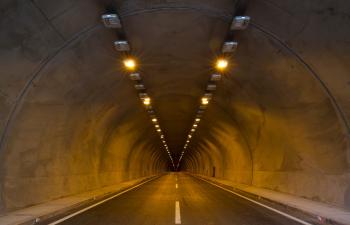The Role of Technology in Modern Underground Construction Projects.
Introduction
Underground construction projects have seen a remarkable transformation in recent years, thanks to the integration of advanced technology. Technology has played a pivotal role in revolutionizing these projects' efficiency, safety, and sustainability, from tunnels and subways to underground storage facilities and mining operations. In this blog, we will explore the significant contributions of technology in modern underground construction and how it has transformed the industry.
Enhanced Surveying and Design
Accurate surveying and precise design are crucial in underground construction projects. Technology has revolutionized this aspect by using advanced surveying tools such as LiDAR (Light Detection and Ranging), GPS (Global Positioning System), and 3D laser scanning. These tools provide accurate data on the existing conditions, enabling engineers to design tunnels and underground structures with high precision. Computer-aided design (CAD) software further facilitates the creation of detailed plans and virtual simulations, ensuring optimal safety and functionality.
Tunnel Boring Machines
One of the most significant advancements in underground construction is using Tunnel Boring Machines (TBMs). These massive machines have greatly accelerated tunnel excavation processes while minimizing disruption to the surrounding environment. Equipped with rotating cutting heads, TBMs can efficiently excavate tunnels through various soil and rock types. They offer higher precision, reduced labor requirements, and increased safety compared to traditional excavation methods. Additionally, TBMs can work around the clock, significantly speeding up project completion timelines.
Automation and Robotics
Automation and robotics have become integral components in underground construction projects. They help increase efficiency, reduce human error, and enhance worker safety. Robotic technologies are employed for reinforcement placement, concrete spraying, and material handling in confined spaces. With remotely operated robotic systems, workers can perform tasks from a safe distance, minimizing the risk of accidents and exposure to hazardous environments.
Monitoring and Safety Systems
Technology has transformed the monitoring and safety aspects of underground construction projects. For example, advanced sensor systems monitor structural stability, detect ground movements, and monitor air quality. These sensors provide real-time data, enabling early detection of potential risks and allowing prompt corrective actions. Moreover, integrating artificial intelligence (AI) and machine learning algorithms has facilitated predictive analytics, helping project managers anticipate and mitigate potential issues before they escalate.
Geotechnical Engineering and Ground Improvement
Geotechnical engineering is crucial in underground construction to ensure the stability and longevity of structures. Technology has enabled significant advancements in this field. For example, computer modeling and simulations have refined ground improvement techniques such as soil freezing, jet grouting, and soil stabilization. These technologies aid in selecting the most suitable methods for soil treatment, optimizing designs, and predicting the behavior of the ground during construction.
Energy Efficiency and Sustainability
Modern underground construction projects emphasize energy efficiency and sustainability. Technology plays a vital role in achieving these goals. Innovative lighting systems utilize energy-efficient LED lights, reducing energy consumption and operational costs. Ventilation systems are designed using computational fluid dynamics (CFD) simulations to optimize airflow, ensuring a healthy and safe environment for workers. Additionally, renewable energy sources such as solar panels and geothermal systems are integrated into underground structures, reducing dependence on non-renewable energy sources.
Conclusion
Technology has revolutionized modern underground construction projects in numerous ways. The industry has seen significant efficiency, safety, and sustainability improvements, from enhanced surveying and design to using TBMs, automation, and robotics. Monitoring and safety systems, along with advancements in geotechnical engineering, have further bolstered the reliability and longevity of underground structures. As we progress, continued technological innovation will undoubtedly shape underground construction's future, leading to even more remarkable achievements in this field.


